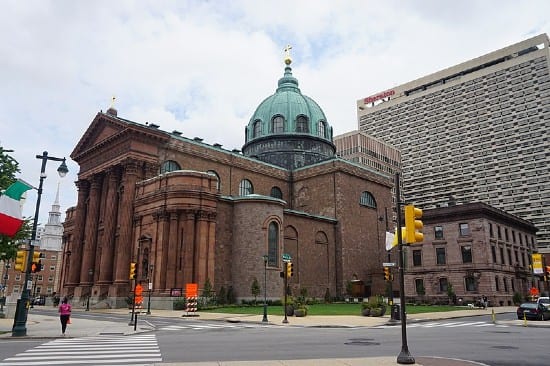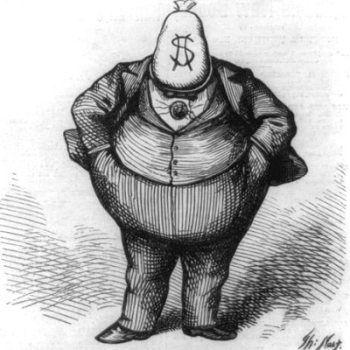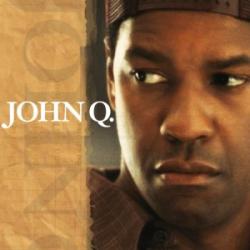A couple of recent posts to help fill in some of the gaps in our timeline stretching from “Saint” William of Norwich in the 12th century up to QAnon in the 21st.
First up is Messiah University historian John Fea’s look at the “Bavarian Illuminati,” “The ‘Deep State’ of the 1790s?”
These conspiracy theories are not new. In the late 1790s, Jedidiah Morse, the congregational minister in Charlestown, Massachusetts, and a well-known author of geography textbooks, drew national attention by suggesting that a secret organization called the Bavarian Illuminati was at work “to root out and abolish Christianity, and overturn all civil government.” He was convinced that this group of atheists and infidels were behind the secular Jacobin movement in France that sought to purge the nation of organized religion. Morse believed that the Illuminati group was pursuing the same clandestine agenda in America and was working closely with Thomas Jefferson-led Democratic Republicans, the Federalists’ political rivals, to pull it off.
Morse learned about the Bavarian Illuminati from books published in Europe describing a network of secret lodges scattered across the continent. In a 1798 fast day sermon, he appealed to the worst fears of those evangelicals who remained concerned with the moral character of the republic. He described the Illuminati’s ominous attempts to “abjure Christianity, justify suicide (by declaring death an eternal sleep), advocate sensual pleasures agreeable to Epicurean philosophy…decry marriage, and advocate a promiscuous intercourse among the sexes.” The presence of the Illuminati in America should cause Christians to “tremble for the safety of our political, as well as our religious ark.” In another sermon on the subject, Morse printed a list of secret societies and Illuminati members currently working their sinister schemes in his Christian nation.
Soon Timothy Dwight, the grandson of Jonathan Edwards and the president of Yale College in New Haven, Connecticut, expressed similar fears about the Illuminati and used his pen to sound the alarm. In a Fourth of July discourse entitled The Duty of Americans, at the Present Crisis, Dwight quoted from Revelation 16 to caution his listeners and eventual readers about “unclean teachers” who were educating innocent people in “unclean doctrines.” Such teachers were spreading throughout the world to “unite mankind against God.” As they performed their malicious work, the Bavarian Illuminati took cues from previous opponents of Protestant America — the Jesuits, Voltaire, and the Masons, to name a few.
Dwight called Americans back to God. This, he believed, was the only effective way of resisting such subversive threats to social virtue. “Where religion prevails,” he wrote, “Illuminatism cannot make disciples, a French directory cannot govern, a nation cannot be made slaves, nor villains, nor atheists, nor beasts.” Dwight reminded his readers that if this dangerous society succeeded in its plans, the children of evangelicals would be forced to read the work of deists or become “concubines” of a society that treated “chastity” as a “prejudice,” adultery as virtue, and marriage as a “farce.”
And here is Diana Butler Bass, picking up the trail a few decades later with “Kidnapping, Pedophilia, and the End of America“:
The details are lurid. A global organization kidnaps children and teens (especially young girls) to have sex with power-hungry men in secret locations, men who are also involved in a traitorous plot to undermine democracy. If the girls become pregnant, their infants are murdered and their bones and blood mixed into the unholy sacraments of a Satanic cult. If a girl resists, she disappears – her fate unknown.
If you think I’ve been spending time online reading QAnon conspiracy theories, you’re wrong. This is the plot of a book published in 1836: The Awful Disclosures of Maria Monk, or, The Hidden Secrets of a Nun’s Life in a Convent Exposed.
The global organization was, in the case of Maria Monk, the Catholic Church. Monk, a Canadian, claimed all of this had happened in a convent in Montreal. The book caused a public uproar and forced an investigation – the conclusion of which led even local Protestants, who wanted to believe their hated Catholic neighbors were capable of such treachery, to agree the whole thing was a hoax.
The Canadians did their homework. Monk quietly left town and made her way to Philadelphia, where she penned a sequel – Further Disclosures of Maria Monk – for an American audience more receptive to her tales. In 1835, several sensational accounts about the “Catholic threat” appeared. Samuel Morse (the inventor of the telegraph) published Foreign Conspiracies against the Liberties of the United States, accusing the Jesuits of colluding with Austria to install the Hapsburg Emperor as America’s new king.
The Reverend Lyman Beecher (brother of Harriet Beecher Stowe) wrote his Plea for the West, warning American Protestants that the Republic was being threatened by European “potentates” dumping thousands and thousands of impoverished Catholics in the United States – with the effect of filling jails and poorhouses, increasing the taxes paid by law-abiding Protestants to care for the indigent, and forming a “papist” voting block.
Also in 1835, Rebecca Reed, a young Episcopal woman from Boston, published Six Months in a Convent. Reed had attended a Catholic school in 1831 and became intensely attracted to Catholicism. She expressed her desire to be a nun, and she entered the convent. Instead of finding spiritual contentment, however, Reed claimed the nunnery was a prison – including spying, near-torturous punishments for those who questioned authority, a Nurse Ratched-like Mother Superior, and a Bishop who “caressed” his favorite young nuns. Reed’s book outdid both Morse and Beecher – Six Months sold 50,000 copies in its first year.
Samuel Morse, by the way, was the eldest son of Jedidiah Morse. The latter Morse warned of a shadowy cabal of Jesuits while the former warned of a shadowy cabal of anti-Jesuits. Both Morses accused the respective cabals of the same things.
There’s a lot here I’m going to want to explore further in my ongoing pursuit of a Grand Unified Theory of Satanic Baby-Killers. We might posit, for instance, that the elder Morse was relatively constrained — refraining from the usual full-on superlative of They kill innocent babies for Satan!!1! found in the younger Morse’s formula — because the unsustainable contradictions of America’s constitutional (in two senses) injustice wasn’t as acute in the 1790s as it would become a generation later.
I’ve also been exploring the idea of “The Jesuits” serving as a proxy for “The Jews” in the conspiracy theories of Protestant Christendom — a corollary to the larger hypothesis that all conspiracy theories in Christendom have an antisemitic trajectory. See, for example, the homicidal New York Panic of 1741, a time and place where the alleged nefarious Jewish influence wasn’t prominent enough to serve it’s usual conspiratorial function for Christians, so Jesuits were tortured and killed as the nearest convenient substitute. The two Morses seem to provide an interesting case study in how this all works.
Lest any of this seem overly abstract, bear in mind that the best-selling hysteria Diana Butler Bass surveys had very real and very bloody consequences on the streets of American cities. The fevered conspiracy books she discusses fueled the Philadelphia riots of 1844. Here’s a picture of the Cathedral Basilica of Saints Peter and Paul in Philly, built around that time.

Note the high windows, placed just above a literal stone’s throw from the ground. They had to be, because of the raving conspiracy theories hyped by Maria Monk and Rebecca Reed and Lyman Beecher and even the guy who invented the telegraph.
Those high windows are a reminder of how, even today, the insider-ness or the whiteness of Catholic immigrants and their descendants is conditional and tenuous, dependent on explicit demonstrations of allegiance to superordinate insiders rather than solidarity with other outsiders. Which is why Frank Rizzo served two terms as mayor and why you see all those Trump 2020 yard signs in Delco.












